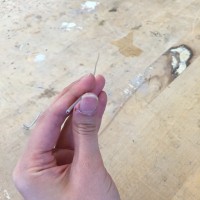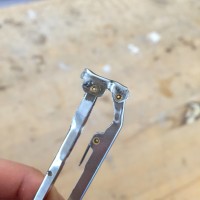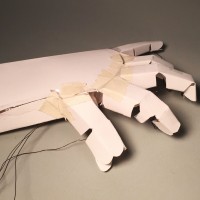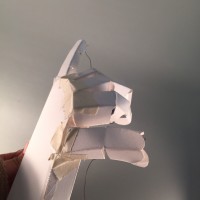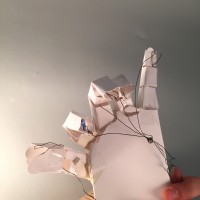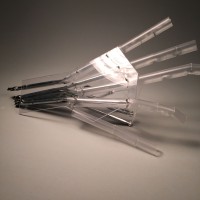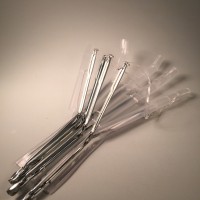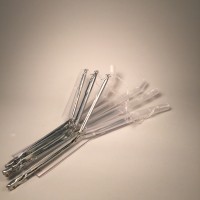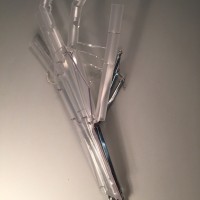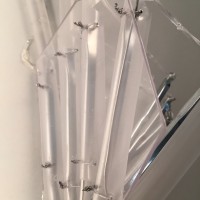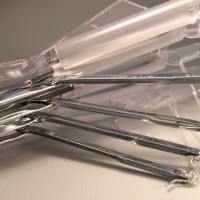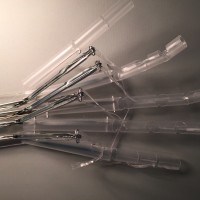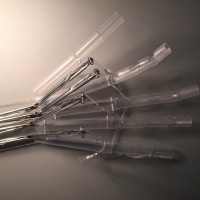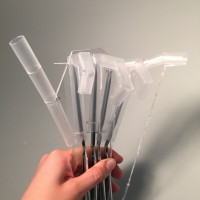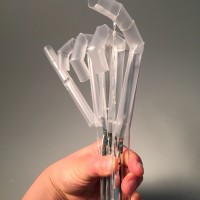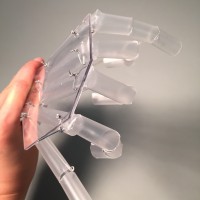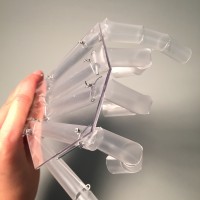Intentions
For my final project I have chosen a ‘pinky promise’ gesture, a common hand sign used from childhood and onwards, especially in my culture, Korea. I wanted to apply this particular gesture not only because it has an universal symbol of ‘promise’ but also because the gesture ties me back to my personal memories with my mother. One of the favourite moments that I have always found delight in is whenever my mother and I go shopping. Since young, we would always hold each other with our pinky finger as if it signifies a special bondage between my mother and I.
The usage of the skeleton of the umbrella as my exterior tendons subtly embedded my initial choice behind
Process
This project began with mapping the hands with partners in class, which we used tracing paper to wrap around our hands and connected the papers with masking tape. Implementing the three dimensional views of the hand map, we carried out orthographic hand drawings that illustrates precise measurements of the front, side elevation and the back view.
Nicole Lee
talks to
Yunsun Lee
[Artist]
“Idiosyncratic Connection”
NICOLE LEE: How did drawing help you understand the hand, its dimension and its movement?
YUNSUN LEE: The drawings helped me mentally envision the different views of the hand when making the final project.
NL: How did drawing assist with the physical process of making the mechanical hand?
YSL: Frankly, the drawing itself did not help but making the paper prototype certainly helped me to figure out the functions of the movement.
NL: How did your design change over time?
YSL: My design changed over time because initially I used a different material, I was inspired by the movement of an umbrella with the movement of the knuckles of the hands. So my first attempt was just using the metal umbrella skeleton by cutting up the pieces and rejoining them with wire and rubber band as the joint. However, I realized that the support of the Distal Phalange joint did not have an adequate force to be pulled completely towards the palm when initiated to do the gesture. Therefore, I had to research to find the right material that could spring back to it’s original state unlike the metal which could not obtain such feature. Through the research I found out that materials that were similar to skin was silicone, which successfully carried a flexible factor. However, I wanted to create my final project with a more ‘recyclable’ element, which eventually made me go towards straws that I have found from GongCha, a bubble tea drink store. The use of the plastic was completely different from my original idea but the use of plastic made me want to explore more various densities of the same material, which led to the usage of acrylic perspex as my planar material.
NL: Did your project come out the way you intended? How? Or How did is it different from what you expected, and why did this happen?
YSL: It did not come out as expected in a sense of the material that I will be using, but I feel that I have captured my initial aim to make the design of the hand as minimalistic and sophisticated as possible, while still obtaining the functionality; hand’s movement.
NL: Which new tools and equipment did you use for this project?
YSL: For this project, it was very interesting to me because I have learnt so many different methods to connect different materials. It also helped me from analyzing the joints from the umbrella skeleton, as I thought it was very interesting to see how metal was linked between different metals. I asked the technicians at the wood shop and they told me that they were linked with a metal pipe and pressed down with a heavy object. The connection used with the metal pipe looked very clean, thus I have implemented that in my design, to obtain the simple design.
NL: Which tools were used for a previous project, but you were able to apply your knowledge to this project?
YSL: From the previous project which was the wire shoes, I researched and implemented the different methods of utilizing wire to connect and design. Such factor was definitely helpful when I used wire as my connection in this final project.
NL: What materials were new to you?
YSL: Metal pipe, Plastic (straw), Metal and Rubber bands
NL: What was the easiest part of this project? The most enjoyable? The most challenging?
YSL: The easiest part of the project would be actually constructing the hands together. The most enjoyable part has to be when I could finally visualize the whole project coming together. It was very exciting to see when the fingers finally worked like my hand gesture.
The most challenging factor was definitely figuring out the mechanics of the movement of the hand. Also be cause my fingers were almost a fist, trying to find the ways the three joints could demonstrate a unified move like a real hand was very challenging. It was more difficult as I tried to figure it out before constructing the hand and collecting materials. It was very hard to visualize the mechanics behind the movement.
NL: What did you learn most about yourself through doing this project?
Although it may sound like a cliche, through this project I have experienced my capacity in finding new ways to construct an existing feature. I was wholly surprised that I could combine different and unthinkable materials together and build a common element. The project definitely pushed me to explore a vast array of different materials, methods to connect and to construct.

